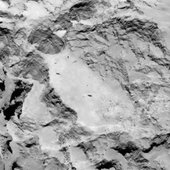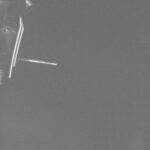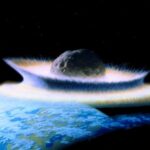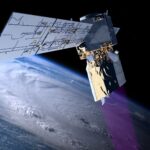
Credits voor alle foto’s in de blog: ESA/Rosetta/MPS for OSIRIS Team MPS/UPD/LAM/IAA/SSO/INTA/UPM/DASP/IDA
De Landing Site Selection Group (LSSG) heeft dit weekend vijf kandidaat-landingsplaatsen op komeet 67P/Churyumov-Gerasimenko gekozen, waar de Philae lander op dinsdag 11 november kan landen. Je ziet de vijf plekken op foto van de vier kilometer grote komeetkern, gefotografeerd op 16 augustus met de OSIRIS narrow-angle camera van Rosetta. Philae bevindt zich nu nog op Rosetta, de Europese verkenner die op 6 augustus j.l. in een baan om komeet kwam. De vijf plaatsen zijn gekozen uit een lijst van 10 plaatsen, A tot en met J. Van de gekozen plaatsen liggen er drie op het kleine gedeelte van de kern (B, I en J), twee op het grote gedeelte (A en C). Zoals je in deze blog hebt kunnen lezen zal 12-14 oktober van deze vijf plekken de eerste landingsplaats worden gekozen, waar Philae 11 november om 11.30 uur Nederlandse tijd zal landen.
Hieronder per plaats informatie over het gebied – ik hanteer even de Engelse info. De volgorde van letters geeft niet de voorkeur voor de plaats aan, alle vijf plaatsen zijn op dit moment even ‘favoriet’.
Site A
Site A is an interesting region located on the larger lobe, but with a good view of the smaller lobe. The terrain between the two lobes is likely the source of some outgassing. Higher-resolution imaging is needed to study potential surface hazards such as small depressions and slopes, while the illumination conditions also need to be considered further.
Site B
Site B, within the crater-like structure on the smaller lobe, has a flat terrain and is thus considered relatively safe for landing, but illumination conditions may pose a problem when considering the longer-term science planning of Philae. Higher-resolution imaging will be needed to assess the boulder hazards in more detail. In addition, the boulders are also thought to represent more recently processed material and therefore this site may not be as pristine as some of the others.
Site C
Site C is located on the larger lobe and hosts a range of surface features including some brighter material, depressions, cliffs, hills and smooth plains, but higher-resolution imaging is needed to assess the risk of some of these features. It is also well illuminated, which would benefit the long-term scientific planning for Philae.
Site I
Site I is a relatively flat area on the smaller lobe that may contain some fresh material, but higher-resolution imaging is needed to assess the extent of the rough terrain. The illumination conditions should also allow for longer-term science planning.
Site J
Site J is similar to site I, and also on the smaller lobe, offering interesting surface features and good illumination. It offers advantages for the CONSERT experiment compared with Site I, but higher-resolution imaging is needed to determine the details of the terrain, which shows some boulders and terracing.
OK, de vijf kandidaat landingsplaatsen zijn bekend, welke zal het uiteindelijk gaan worden? De weddenschappen zijn vanaf nu geopend. 😀 Bron: ESA.







